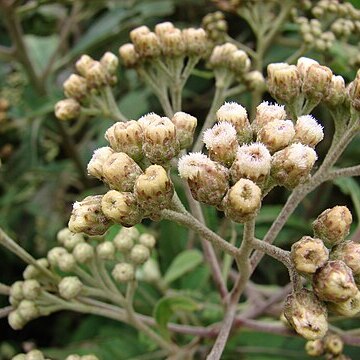Shrubs or herbs. Leaves alternate (rarely opposite), (sub-)sessile, generally not decurrent, dentate or less often with entire margins. Capitula solitary or in terminal corymbs, disciform; phyllaries in several series, imbricate, the outer ovate, the inner linear; receptacle epaleate. Outer florets in 1 or several series, female, filiform, with 3–5 minute lobes distally, style with filiform branches; central florets few, hermaphrodite, fertile or sterile, tube slightly widening, lobes 5; anthers sagittate to auriculate and distally acuminate; style entire or almost undivided (occasionally divided), filiform, papillose or puberulous. Achenes often vestigial in inner florets, cylindrical; pappus uniseriate, of free barbellate bristles.
Heads disciform, white to yellow or pink-purple; invol ovoid to broadly campanulate or hemispheric, its bracts firm, imbricate; receptacle flat, naked; outer fls in several series, pistillate, the filiform cor shorter than the style; central fls tubular, perfect, mainly sterile, often with undivided style; anthers filiform-tailed; achenes tiny, 4–6-angled; pappus a single series of capillary bristles; herbs (all ours) or shrubs with alternate, usually toothed lvs. 50, mostly warm reg.

